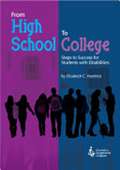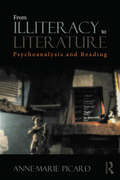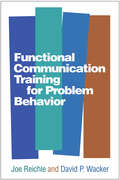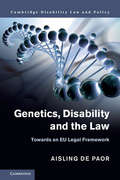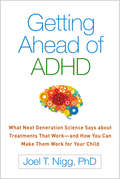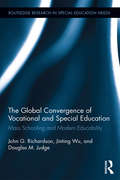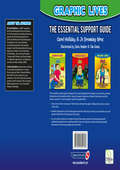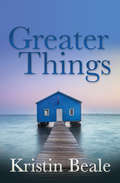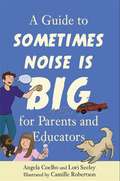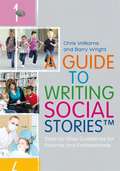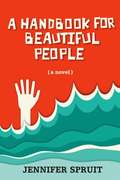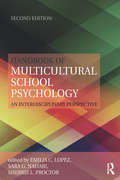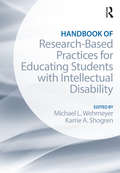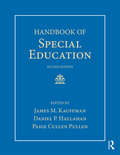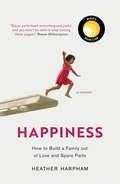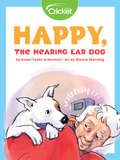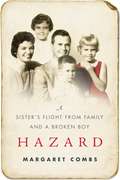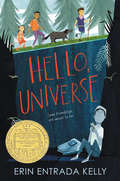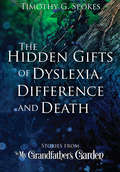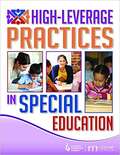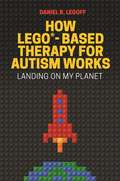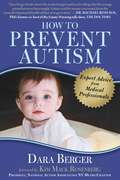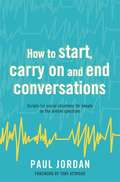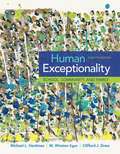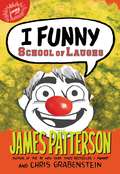- Table View
- List View
From High School to College: Steps to Success for Students With Disabilities
by Elizabeth HambletCollege is a different world from high school and the laws, expectations, and culture around disability services and accommodations are different, too. Elizabeth Hamblet, a Columbia University Learning Specialist/Consultant and recognized transition speaker and writer, has written a one-of-a-kind, step-by-step guide that is an essential resource for college-bound students, their families, and the special educators and school counselors who work with them.
From Illiteracy to Literature: Psychoanalysis and Reading
by Anne-Marie PicardFrom Illiteracy to Literature presents innovative material based on research with ‘non-reading’ children and re-examines the complex relationship between psychoanalysis and literature, through the lens of the psychical significance of reading: the forgotten adventure of our coming to reading. Anne-Marie Picard draws on two specific fields of interest: firstly the wish to understand the nature of literariness or the "literary effect", i.e. the pleasures (and frustrations) we derive from reading; secondly research on reading pathologies carried out at St Anne’s Hospital, Paris. The author uses clinical observations of non-reading children to answer literary questions about the reading experience, using psychoanalytic theory as a conceptual framework. The notion that reading difficulties or phobias should be seen as a symptom in the psychoanalytic sense, allows Picard to shed light on both clinical vignettes taken from children’s case histories and reading scenes from literary texts. Children experiencing difficulties in learning to read highlight the imaginary stakes of the confrontation with the arbitrary nature of the letter and the "price to pay" for one’s entrance into the Symbolic. Picard applies the lesson "taught" by these children to a series of key literary texts featuring, at their very core, this confrontation with the signifier, with the written code itself.. This book argues that there is something in literature that drives us back, again and again, to the loss we have suffered as human beings, to what we had to undergo to become human: our subjection to the common place of language. Picard shows complex Lacanian concepts "at work" in the field of reading pathologies, emphasizing close reading and a clinical attention to the "letter" of the texts, far from the "psychobiographical" attempts at psychologizing literary authors. From Illiteracy to Literature presents a novel psychodynamic approach that will be of great interest to psychotherapists and language pathologists, appealing to literary scholars and those interested in the process of reading and "literariness."
Functional Communication Training for Problem Behavior
by David P. Wacker Joe ReichleChildren and adolescents with moderate and severe disabilities often have communication challenges that lead them to use problem behavior to convey their desires. This is the most comprehensive contemporary volume on functional communication training (FCT)--the individualized instructional approach that teaches a child socially acceptable communicative alternatives to aggression, tantrums, self-injury, and other unconventional behaviors. The expert authors provide accessible, empirically based guidelines for implementing FCT, and tips for overcoming obstacles. Grounded in the principles of applied behavior analysis, the book includes detailed strategies for developing a support plan, together with illustrative case examples.
Genetics, Disability and the Law: Towards an EU Legal Framework (Cambridge Disability Law and Policy Series)
by Aisling De PaorWhile advances in science and technology bring many advantages, we must not ignore the harm that they can cause. Rapid changes in genetic testing are a prime example, and indicators can now help to detect, address and treat diseases. However, in this new study, Aisling de Paor examines how genetic testing is also being used for non-medical reasons, for example for work opportunities and insurance coverage. Genetics, Disability and the Law is the first book of its kind to substantively consider an EU-level response to the use of genetic information. de Paor discusses how to help genetic and scientific research to evolve and grow, how to enhance public confidence in research, and how to control it so that it recognises our values and fundamental human rights. An understudied but vitally important topic, de Paor's work provides a valuable and timely contribution to the field of disability rights. Presents a practical consideration of an EU-level legislative response to controlling the use and misuse of genetic information, appealing to those involved in the regulation of this field Takes a human rights and disability approach to considering the regulation of genetic information, which will interest scholars and policymakers from a variety of disciplines, in particular because it considers the intersection of disability and genetics Considers normative and non-normative attitudes to the regulation of genetic information, giving readers a new and varied insight
Getting Ahead of ADHD: What Next-Generation Science Says about Treatments That Work—and How You Can Make Them Work for Your Child
by Joel T. NiggDoes toxic pollution cause attention-deficit/hyperactivity disorder (ADHD)? What about screen use? Are alternative treatments worth exploring? Can dietary changes help? From leading ADHD researcher Joel T. Nigg, this book presents exciting treatment advances grounded in the new science of epigenetics--how genes and the environment interact. Distinguishing unsupported, even dangerous, approaches from bona fide breakthroughs, Dr. Nigg describes specific lifestyle changes that have been proven to support the developing brain. Vivid stories illustrate ways to maximize the positive effects of healthy nutrition, exercise, and sleep, and minimize the damage from stress and other known risk factors. The book helps you figure out which options hold the most promise for improving your child's symptoms and overall well-being--and gives you step-by-step suggestions for integrating them into daily life.
The Global Convergence Of Vocational and Special Education: Mass Schooling and Modern Educability (Routledge Research in Special Educational Needs)
by John G. Richardson Jinting Wu Douglas M. JudgeThe global trend in educational participation has brought with it a cross-national consequence: the expansion of students with "special needs" (SEN) placed in special education and the growth of "low achieving" students diverted to vocational tracks. This book explores the global expansion of special and vocational education as a highly variable event, not only across nations of considerable economic, political and cultural difference, but between nations with evident similarities as well. The Global Convergence of Vocational and Special Education analyzes how the concept of secular benevolence underscores the divergent and convergent trajectories that vocational and special education have taken across the globe. The authors embrace national differences as the means to observe two dicta of comparative research: similar origins can result in very different outcomes, and similar outcomes can be the result of very different origins.
Graphic Lives: Essential Support Guide (Graphic Lives)
by Carol Holliday Jo Browning WroeGraphic Lives is a series of highly engaging graphic novels for young people who may need counselling and psychotherapy. Each book introduces the difficulties faced by a teenage character and follows them as they travel on their therapeutic journey with a skilled and creative therapist. The key aims of these books are: to demystify counselling and psychotherapy so that it is more appealing and accessible to young people; to destigmatise emotional and mental health problems so that young people are better able to accept help; to encourage young people to embark upon their own healing journeys, equipped with the sense that there is a way forward. The essential support guide, designed to be used alongside the Graphic Lives novels, provides therapists and counsellors with a range of support resources, linked to the stories and the issues covered. For each graphic novel, this guide offers: clear and concise coverage of risk factors and warning signs relating to the issue covered in the story; detailed exploration of each therapeutic session in the story so that you can devise you own sessions that link to the therapy in the story; an up-to-date summary of research around the issue covered in the book along with professional guidance on working with that issue to help you achieve the best possible outcomes for the young people you work with.
Greater Things: Triumph Over Adversity
by Kristin BealeKristin was thrown into a disability at the age of 14, and every day since then has been a struggle to overcome it. She has fought through the unavoidable physical stresses of her condition for over a decade and, even more, the heavy psychological burdens that follow closely behind. Greater Things is a raw perspective on everything from how people react differently to her situation, to learning how to navigate in and through an inaccessible world, to just trying to make the best of a crummy situation.
A Guide to Sometimes Noise is Big for Parents and Educators
by Angela Coelho Lori Seeley Camille RobertsonUnderstand how children with autism experience the world around them with this simple guide. Learn why they might react unexpectedly to lights, noise, and even seemingly simple requests, and what you can do to help reduce sensory overload. This accompanying guide to the children's picture book Sometimes Noise is Big takes the illustrations and gives a breakdown of what is happening in each picture, with practical tips on how to help children who struggle with sensory issues. This book can also be used as a standalone resource, and is ideal for supporting children aged 5+ with autism at home, in the classroom, and for raising awareness of autism and sensory issues.
A Guide to Writing Social Stories™: Step-by-Step Guidelines for Parents and Professionals
by Barry Wright Chris WilliamsSocial StoriesTM are a widely used and highly effective intervention for supporting children on the autism spectrum, but it can feel overwhelming to follow all the rules put in place to create personalised stories. Developed with the input of parents and professionals, and informed by new Social Stories research, this is a comprehensive, clear, easy step-by-step guide to writing effective personalised Social StoriesTM that give children social information, creating many benefits for them. The book includes many examples of real Social Stories created for children by parents and teachers working together, and handy downloadable checklists that highlight the essential components of a Social Story, helping to ensure that each story you write achieves the best possible results.
A Handbook For Beautiful People
by Jennifer SpruitMarla has a troubled past. Her rocky upbringing in a series of foster homes, complicated by the fact that she has fetal alcohol syndrome, has made it hard for her to plan her life and follow through on decisions. At last she is working consistently, and she has a relationship with a guy who seems stable and caring. Then, when Marla discovers she is pregnant, her life becomes a whirlwind of complications and uncertainties. She calls upon her brother Gavin, who is deaf, to provide moral support. Her roommate Dani, a longtime drug addict, is a help and a hindrance. And Liam, who has his own demons, is ambivalent about his impending fatherhood. There are no easy answers, but Marla manages to find the support she needs and the strength to make hard choices.
Handbook of Multicultural School Psychology: An Interdisciplinary Perspective (Consultation, Supervision, and Professional Learning in School Psychology Series)
by Emilia C. Lopez Sara G. Nahari Sherrie L. ProctorThe second edition of the Handbook of Multicultural School Psychology continues the mission of its predecessor, offering a comprehensive, interdisciplinary view of the field of multicultural school psychology and addressing the needs of children and families from diverse cultural backgrounds. The revised organizational structure includes the following: History and Professional Issues; Consultation and Collaboration; Interventions Focused on Academic and Mental Health Issues; Data-based Decision Making; Systems-based Issues; Training and Research; and Future Perspectives. Nineteen of the volume's twenty-three chapters are completely new to this edition, while the rest have been effectively revised and updated. Comprehensive—In seven sections, this book covers theoretical, research, and practical concerns in a wide range of areas that include multicultural and bilingual issues, second language acquisition, acculturation, parent collaboration, research, and systemic issues. Chapter Structure—Chapter authors follow a uniform structure that includes theoretical and research issues and implications for practice. Recent practice and training guidelines including Blueprint for Training and Practice III (2006), NASP Model for Comprehensive and Integrated School Psychological Services (2010), and APA Multicultural Guidelines (2003) are covered. Interdisciplinary Perspective—Contributing authors are from a wide range of related fields that include school psychology, special education, general education, early childhood education, educational psychology, clinical psychology, counseling, and mental health, thus exposing readers to theory and research from various approaches. Changes—New to this edition is a section focusing on systemic issues such as overrepresentation of culturally and linguistically diverse (CLD) students in special education, prejudice, response to intervention (RTI) for CLD students and English Language Learners (ELL), and end-of-chapter discussion questions. This book is ideal for graduate courses and seminars on multicultural school psychology. It is also a useful reference for researchers and practicing school psychologists and the libraries that serve them.
Handbook of Research-Based Practices for Educating Students with Intellectual Disability
by Michael L. Wehmeyer Karrie A. ShogrenThe Handbook of Research-Based Practices for Educating Students with Intellectual Disability provides an integrated, transdisciplinary overview of research-based practices for teaching students with intellectual disability. This comprehensive volume emphasizes education across life stages, from early intervention in schools through the transition to adulthood, and highlights major educational and support needs of children and youth with intellectual disability. The implications of history, recent research, and existing information are positioned to systematically advance new practices and explore promising possibilities in the field. Driven by the collaboration of accomplished, nationally recognized professionals of varied approaches and philosophies, the book emphasizes practices that have been shown to be effective through multiple methodologies, so as to help readers select interventions based on the evidence of their effectiveness.
Handbook of Special Education
by James M. Kauffman Daniel P. Hallahan Paige Cullen PullenThe purpose of the Handbook of Special Education is to help profile and bring greater clarity to the already sprawling and continuously expanding field of special education. To ensure consistency across the volume, chapter authors review and integrate existing research, identify strengths and weaknesses, note gaps in the literature, and discuss implications for practice and future research. The second edition has been fully updated throughout to take into account recent changes to federal laws as well as the most current academic research, and an entirely new section has been added on research methods in special education.
Happiness: How to Build a Family out of Love and Spare Parts
by Heather HarphamReese Witherspoon's Book Club Pick 2018 An Amazon Best Memoir of the Month One of Elle Magazine's Best Books of 2017 Goodreads Best of the Month Daily Beast, &“Books I Can&’t Live Without&” Good Housekeeping, Best New Books for Summer Book Riot, 100 Must Read Books about Happiness A page-turning, shirt-grabbing true story that follows a one-of-a-kind family required to make nearly unimaginable choices Happiness starts out as a charming courtship between hopelessly attracted opposites: Heather, an out-going, theatre-performing California girl, and Brian, an intellectual New Yorker with an unwavering writing routine. But when Heather falls pregnant, their magical interlude abruptly ends—Brian loves her, only he doesn&’t want kids. So Heather decides to have their baby alone. Mere hours after Gracie&’s arrival, Heather&’s bliss is interrupted when a nurse wakes her, 'Get dressed, your baby is in trouble.' This is not how Heather had imagined motherhood. As concerns for her health grow, Brian and Heather begin a cautious return to each other. Happiness transforms heartbreak and parental fears into a lyrical meditation on love and happiness, in all their crooked configurations.
Happy, the Hearing Ear Dog
by Susan Yoder AckermanTyler's grandma is deaf, so she gets Happy, a specially trained dog who hears for her.
Hazard: A Sister's Flight from Family and a Broken Boy
by Margaret CombsHazard is a poignant, unflinching memoir of the emotional intricacies of growing up with a severely disabled sibling. Margaret Combs shows how her Southern Baptist family coped with lived reality of autism in an era of ignorance and shame, the 1950s through the 1970s, and shares her own tragedy and anguish of being torn between helping her brother and yearning for her own life. Like many siblings of disabled children, young Margaret drives herself to excel in order to make up for her family’s sorrow and ultimately flees her family for what she hopes is a ?normal” life.Hazard is also a story of indelible bonds between siblings: the one between Combs and her sister, and the deep and rueful one she has with her disabled brother; how he and she were buddies; and how fervently she wanted to make him whole. Initially fueled by a wish that her brother had never been born, the author eventually arrives in a deeper place of gratitude for this same brother, whom she loves and who loves her in return.
Hello, Universe
by Erin Entrada Kelly Isabel Roxas<P>Acclaimed and award-winning author Erin Entrada Kelly’s Hello, Universe is a funny and poignant neighborhood story about unexpected friendships. <P>Told from four intertwining points of view—two boys and two girls—the novel celebrates bravery, being different, and finding your inner bayani (hero), and it’s perfect for fans of Lynda Mullaly Hunt, Thanhha Lai, and Rita Williams-Garcia. In one day, four lives weave together in unexpected ways. Virgil Salinas is shy and kindhearted and feels out of place in his crazy-about-sports family. Valencia Somerset, who is deaf, is smart, brave, and secretly lonely, and she loves everything about nature. Kaori Tanaka is a self-proclaimed psychic, whose little sister, Gen, is always following her around. And Chet Bullens wishes the weird kids would just stop being so different so that he can concentrate on basketball. <P>They aren’t friends, at least not until Chet pulls a prank that traps Virgil and his pet guinea pig at the bottom of a well. This disaster leads Kaori, Gen, and Valencia on an epic quest to find the missing Virgil. Sometimes four can do what one cannot. Through luck, smarts, bravery, and a little help from the universe, a rescue is performed, a bully is put in his place, and friendship blooms. <P>The acclaimed author of Blackbird Fly and The Land of Forgotten Girls writes with an authentic, humorous, and irresistible tween voice that will appeal to fans of Thanhha Lai and Rita Williams-Garcia. <P> <b>A New York Times Bestseller </b> <P><b>Winner of the Newberry Medal</b>
The Hidden Gifts of Dyslexia, Difference and Death: Stories from - In My Grandfather's Garden
by Timothy G SpokesCan your difficulties become stepping-stones to a successful future? Can a young boy overcome a serious reading difficulty and achieve beyond all expectations?For a few gruelling years in a Catholic boys’ school, where the Brothers carry a lash under their gowns ready to strike any boy who offends their strict code, Tim struggles with maths and English, and keeps mostly to himself. But he has an observant inner life, with hours spent wandering in the cemetery his grandfather tends, learning about death the leveller and the falsity of social class and wealth.Tim has pitch perfect hearing and a voice like an angel, and is marked out by the Principal Brother to become a priest. Not him! Suffering the tragedy of losing the only three close friends he makes over the years, he experiences living with dyslexia as a cross to bear, until he finds the key to a fearless destiny as a paramedic, trauma and emergency nurse, and academic.The gift of dyslexia has taught Tim to say, “Don’t reach for the sky—hell! Go for the stars. You really can do anything you want.” Wisdom, he says, is found in the strangest places.Among these pages you will experience what Tim learnt within his grandfather’s garden, a strange place to find wisdom—among the head stones and monuments, and where, he says, you can find yesterday’s people.
High-Leverage Practices In Special Education: The Final Report of the HLP Writing Team
by Council for Exceptional Children Ceedar CenterSpecial education teachers, as a significant segment of the teaching profession, came into their own with the passage of Public Law 94-142, the Education for All Handicapped Children Act, in 1975. Since then, although the number of special education teachers has grown substantially it has not kept pace with the demand for their services and expertise. The roles and practice of special education teachers have continuously evolved as the complexity of struggling learners unfolded, along with the quest for how best to serve and improve outcomes for this diverse group of students. High-Leverage Practices in Special Education defines the activities that all special educators needed to be able to use in their classrooms, from Day One. HLPs are organized around four aspects of practice collaboration, assessment, social/emotional/behavioral practices, and instruction because special education teachers enact practices in these areas in integrated and reciprocal ways. The HLP Writing Team is a collaborative effort of the Council for Exceptional Children, its Teacher Education Division, and the CEEDAR Center; its members include practitioners, scholars, researchers, teacher preparation faculty, and education advocates.
How LEGO®-Based Therapy for Autism Works: Landing on My Planet
by Daniel B. Legoff"You know, Dr. Dan, that kid is from my planet." With in-depth descriptions of LEGO®-based therapy in action, this book explains how and why it helps to promote the development of social skills for children with autism spectrum disorders (ASDs) and related conditions. Written by Daniel B. LeGoff, who pioneered the approach, this book comprises a series of case histories of children who participated in LEGO® therapy. It traces the development of the evidence-based approach, shares the clinical insights gained along the way and highlights the principles which should be at the core of all effective treatment and educational strategies for children with ASDs. The case histories have real practical value for those working with children with ASDs and also help to demonstrate the subtleties of the adult facilitation role for professionals running sessions.
How to Prevent Autism: Expert Advice from Medical Professionals
by Dara Berger Dr Sidney Baker Dr Nancy O'Hara Geri Brewster Maureen McDonnel Scott Smith Dr Anju Usman James Lyons-Weiler Kim Mack Rosenberg Dr Stephanie Seneff Maria Rickert-Hong Katie Wright Corinne Simpson BrownThe statistics are alarming and become more so every year. The Centers for Disease Control and Prevention estimates that 1 in 68 children have been identified with an autism spectrum disorder, making it one of the fastest growing developmental disorders in the United States. Further, the CDC estimates that parents with a child on the autism spectrum can have nearly a 20 percent chance of having a second child with autism.In How to Prevent Autism, Dara Berger shares her personal journey with autism. She describes everything that went wrong with her son that led to an autism diagnosis and everything she did differently to prevent her daughter from suffering the same fate. She interviews eight well-known ASD experts--including doctors, nutritionists, nurses, and scientists--about the factors that have led to the growing epidemic of autism. Based on the best practices for preventing autism in children, each professional offers perspectives grounded in their own research and their patients’ improvements. The book covers every detail--from the importance of mothers’ cleaning out their bodies preconception, through common genetic mutations that may put children at risk, to the crucial role of nutrition in prevention.All parents agree that every choice counts when it comes to the health of their children. As Dara Berger makes clear in this personal, informative, and authoritative book, the stakes could not be higher when it comes to autism.
How to start, carry on and end conversations: Scripts for social situations for people on the autism spectrum
by Tony Attwood Paul JordanDo you find it hard to make friends? Do you struggle to know what to say to start a conversation? In this book, Paul Jordan, who is on the autism spectrum, explains how to make sense of everyday social situations you might encounter at school, university or in other group settings. He reveals how, with the use of just 65 simple words, it is possible to create 'scripts for thinking' that break conversations down into small chunks and help you to think of what to say, whether you are speaking to a fellow student, starting a conversation with a new friend, calling out bullies or answering a teacher's question. These small words will be a big help for all teenagers and young people with ASD.
Human Exceptionality: School, Community, And Family
by Michael L. Hardman Clifford J. Drew M. Winston EganExpanding on its widely respected and unique focus on the critical role of professionals in education, psychology, counseling, health care, and human services, HUMAN EXCEPTIONALITY: SCHOOL, COMMUNITY, AND FAMILY, 12th Edition, is an evidence-based testament to how cross-professional collaboration enhances the lives of exceptional individuals and their families. This text's unique lifespan approach combines powerful research, evidence-based practices, and inspiring stories, engendering passion and empathy and enhancing the lives of individuals with exceptionalities. Designed to help students experience individuals with disabilities and their families in a personal and intimate fashion, HUMAN EXCEPTIONALITY is an excellent resource for preparing both preservice and practicing teachers, as well as a range of other human services professionals in the fields of psychology, sociology, social work, and the health sciences.
I Funny: School of Laughs (I Funny #5)
by James Patterson Jomike TejidoTeaching other kids how to be funny is the toughest gig that Jamie Grimm has ever had, and with the highest stakes. If he fails, his school library will be shut down for good!Even though he has a national contest trophy and a TV show under his belt, Jamie Grimm isn't one to sit back and relax. When his school has a major funding crisis, Jamie hits on a bright idea to save the day--a comedy class for the other students. Little does he know that making jokes and teaching jokes are two very different things...and he's only good at one of them. With the fate of his school's library on his shoulders, Jamie has to dig deep to see if he has what it takes to succeed at his most difficult challenge yet.
